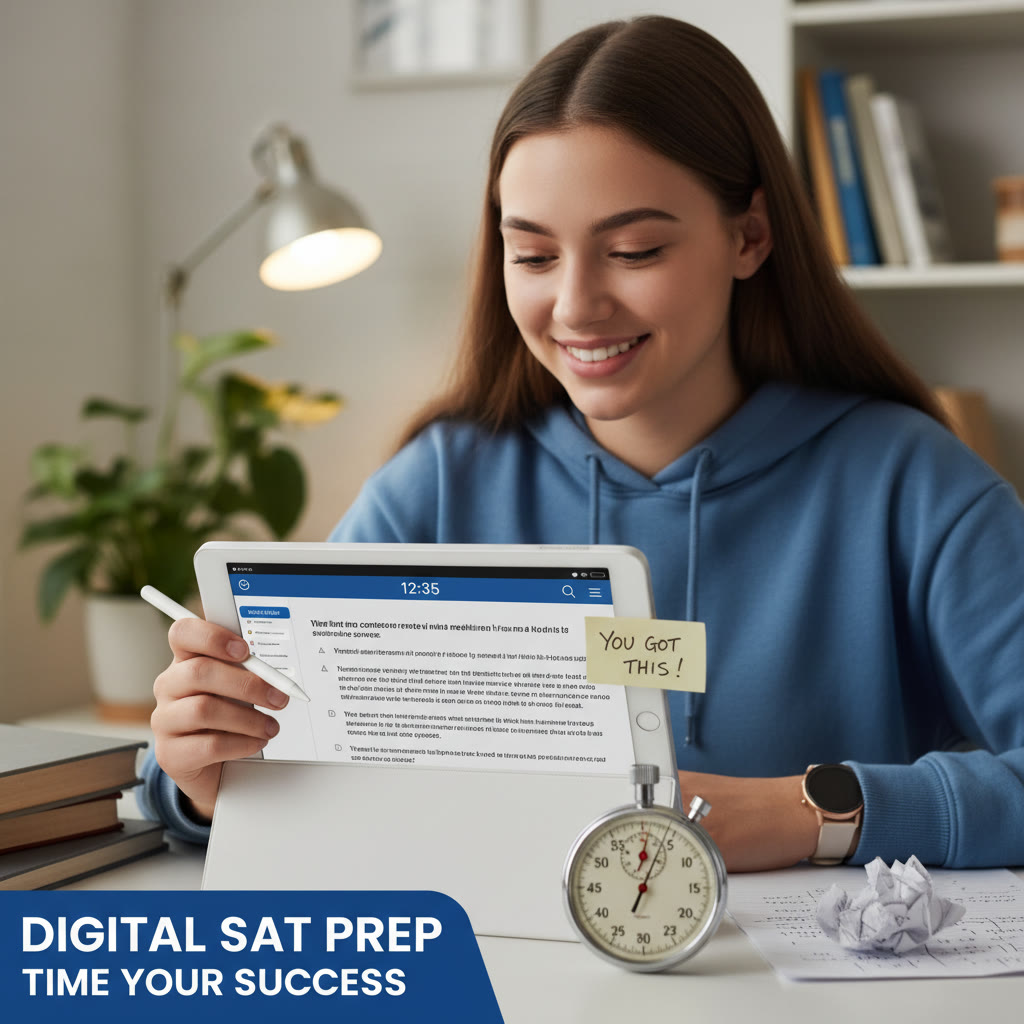Welcome — Why the SAT Still Matters for KAIST Applicants
If you’re a student (or a parent of one) aiming for KAIST — Korea Advanced Institute of Science & Technology — you already know it’s a bold, exciting goal. KAIST is one of Asia’s most respected science and engineering universities, and its admissions process for international students can feel different from the U.S.-centric application world. One recurring question I hear is: “Do I need the SAT? And if so, what score should I aim for?”
This article walks you through the practical, latest-minded approach to the SAT (the Digital SAT format), how admissions committees at top STEM schools like KAIST typically view standardized tests, realistic target scores, how to submit scores, and how to build a study plan that fits your life. I’ll also sprinkle in examples, a timeline, and a clear checklist so you and your family can move forward with confidence — not confusion.

First things first: Does KAIST require the SAT?
Short answer: It depends. Admissions policies change, and KAIST’s international admissions pathways — whether for freshmen international applicants or for students applying through specific scholarship programs — can have different testing expectations. Commonly the university asks international applicants to provide standardized test scores as part of a holistic review, but the exact policy (required, recommended, or optional) can shift between application cycles.
Practical takeaway: treat the SAT as an important credential right now. Even if a particular year’s policy is test-optional, a strong SAT score still helps you stand out — especially for competitive, quantitative programs where standardized metrics help admissions committees compare applicants from many different educational systems.
How top STEM schools use SAT scores
Admissions officers at selective technical universities typically use test scores to:
- Verify quantitative readiness (math and problem-solving ability).
- Compare applicants from different countries and curricula in a standardized way.
- Inform scholarship or merit-award decisions when academic records are hard to compare directly.
Digital SAT: what it is and why it matters for KAIST hopefuls
The SAT has transitioned to a fully digital format. The Digital SAT reduces test time, adapts in difficulty between sections, and emphasizes both reasoning and application. For international applicants to KAIST, this matters for two reasons:
- Timing and registration windows are different from the older paper-based schedule — plan early.
- The adaptive format means consistent practice with digital, timed problem sets will more closely reflect test day conditions.
Action step: register for a Digital SAT date at least two to three months before your application deadlines. This gives you time to send scores and, if needed, retake the test.
What SAT score should you aim for for KAIST?
There’s no single “KAIST cutoff” published in the same way U.S. colleges sometimes publish averages. However, we can build sensible, strategic score targets based on competitiveness, scholarship potential, and how international STEM programs generally evaluate applicants.
Recommended score bands (practical targets)
| Goal | Digital SAT Score Range (Composite equivalent) | Why this target? |
|---|---|---|
| Safety / Admissions confidence | 1100–1250 | Shows solid readiness; may be competitive for some international pathways but not for top scholarships. |
| Competitive Applicant | 1250–1400 | Reflects strong quantitative and evidence-based skills; places you in a competitive applicant pool for many programs. |
| Target for Scholarship / Highly Competitive | 1400–1500+ | Top-tier scores strengthen scholarship prospects and help you stand out among international applicants. |
Note: these bands are practical guidance, not official cutoffs. Admissions committees evaluate each application holistically — your course rigor, teacher recommendations, research experience, competition awards, essays, and interview (if any) all matter.
How to prepare for the Digital SAT with KAIST in mind
Think of SAT prep not as memorizing tricks but as sharpening the tools that KAIST values: logical problem-solving, mathematical fluency, and clear evidence-based writing.
Step-by-step study plan (6–12 weeks)
- Diagnostic test (Week 0) — Take a timed Digital SAT practice test to establish your baseline. Identify weak spots: algebra, data analysis, reading comprehension, or essay-style argument (if your application pathway uses the writing sample).
- Targeted practice (Weeks 1–6) — Daily short blocks: math practice 4–5 days/week (45–60 minutes), reading/writing practice 3–4 days/week (30–45 minutes). Focus on active problem-solving: why an answer is wrong, not just right.
- Timed full-length practices (Weeks 4 & 6) — Simulate test day twice; practice time management and stamina in the digital interface.
- Review & polish (Weeks 7–8) — Analyze mistakes, refine strategies, practice high-difficulty math and evidence-based reading passages.
- Final simulation & registration check (Week 9) — Run a full test under test-day conditions, confirm ID, test center or home-testing tech requirements, and plan score-sending.
Essential tools and practice focus
- Official Digital SAT practice tests and question banks — simulate the interface.
- Targeted math drills (algebra, advanced algebra, problem solving with data) — these are high-yield for STEM applicants.
- Evidence-based reading comprehension — practice synthesizing technical passages quickly and accurately.
- Timed digital drills for pacing — the digital format can feel faster; practice the pacing specifically online.
Submitting SAT scores to KAIST: practical steps
Many international applicants walk into this step with questions: do I send official scores? How many? When? Here are straightforward steps that will save stress:
- Confirm KAIST’s test-reporting policies for your application cycle. If the university allows or prefers certain test-reporting portals, follow that guidance.
- Send official scores directly from the College Board to KAIST before application deadlines. Allow 1–2 weeks for processing and any administrative lag.
- If you take multiple tests, send your highest official score unless the application specifically asks for all attempts.
Practical tip: keep screenshots and confirmations of sent scores and any admissions portal receipts — those save time if an administrative follow-up is required.
Timing & deadlines — example timeline for a fall application
| Task | Recommended Timing |
|---|---|
| Start SAT prep | 12–18 months before application (or at least 3 months for focused prep) |
| Take Digital SAT (first attempt) | 6–9 months before application deadline |
| Retake (if needed) | 3–4 months before deadline |
| Send official scores to KAIST | At least 4 weeks before application deadline |
Fine-tuning your entire application — where SAT fits in
Think of the SAT score as one strong tile in a mosaic. For KAIST, your profile often benefits most from the combination of strong quantitative tests + demonstrable STEM engagement (research projects, internships, competitions), compelling essays, and crisp recommendations.
How to balance the components
- If your SAT score is excellent, but coursework or recommendations are thin, invest time in strengthening academic references and highlighting concrete research activities.
- If your SAT score is modest but you have a strong research/project portfolio, craft essays that tie your experiences to your academic goals — show how you’ll contribute to KAIST’s community.
- For scholarship consideration, high scores combined with standout achievements significantly improve your chances.
Common applicant questions — answered simply
Q: Can I apply without SAT scores?
A: Possibly. Some cycles and pathways may allow test-optional submissions, but many international applicants still submit scores. Even when optional, a strong SAT score is an advantage — especially for STEM applicants — so plan to take it unless you have a compelling reason not to.
Q: What about ACT or other tests?
A: KAIST may accept other standardized tests in place of the SAT; check the specific application instructions. For students whose strengths better match ACT-style questions, choose the test that best showcases your skills — and prepare in the right format (digital vs. paper as applicable).
Q: How many times should I take the SAT?
A: Most students do 1–3 attempts. One well-prepared test is better than multiple rushed attempts. If you improve significantly on a retake, send the higher score.
How personalized tutoring helps — where Sparkl fits naturally
Personalized tutoring can be a game-changer. For many applicants aiming for KAIST, targeted, 1-on-1 guidance accelerates improvement in weak areas and builds test-taking confidence. That’s where services like Sparkl’s personalized tutoring shine: tutors create tailored study plans, offer 1-on-1 guidance, and use AI-driven insights to highlight the highest-impact practice areas. A tutor who understands both the Digital SAT format and what selective STEM admissions committees value can help you focus efficiently and improve faster than a generic study plan.
If you’re juggling school, extracurriculars, and college applications, a tailored plan that fits your schedule — with periodic mock tests, focused problem sets, and clear progress markers — often yields the best return on time invested.
Sample application checklist for KAIST hopefuls
- Confirm KAIST application requirements for the target year and pathway (international freshman, scholarship tracks, etc.).
- Register and take the Digital SAT early enough to allow a retake if needed.
- Collect transcripts, translated documents, and prepare two or three strong recommendations.
- Draft and revise your personal statement/essays to emphasize research, curiosity, and problem-solving.
- Prepare a short portfolio or project summary if you have research, published work, or competitions — these stand out for STEM programs.
- Send official SAT scores to KAIST and keep confirmation receipts.
- Schedule interviews or campus visits (virtual or in-person) if offered.
- Apply for scholarships and financial aid where eligible; check deadlines carefully.
Example candidate comparisons — real-world context
Here are two hypothetical examples showing how SAT scores interact with other strengths:
- Student A: SAT 1450, strong math research project (published preprint), two glowing teacher recommendations. This profile is competitive for KAIST’s STEM programs and for merit scholarships.
- Student B: SAT 1280, exceptional robotics competition awards, and a compelling essay about research goals. This student is still a strong candidate — the hands-on achievements can balance a mid-range SAT if presented well.
The lesson: SAT scores amplify your story, but do not replace demonstrated academic passion and real-world STEM engagement.
Test-day practicalities for international applicants
Whether you test in a regional center or use approved digital testing at home, pay attention to these details:
- ID requirements — ensure your passport or national ID matches the name on your College Board registration exactly.
- Technical checks for digital testing — test your device and internet, and know backup plans.
- Time zone awareness — confirm local test start times and score release timing to meet KAIST deadlines.

Red flags and common application mistakes to avoid
- Missing the official score-sending deadline—always send scores a week or two earlier than you think you need to.
- Relying solely on test scores — neglecting essays, recommendations, or project descriptions hurts your holistic profile.
- Ignoring test-day logistics — small administrative errors (mismatched names, late arrivals) can create unnecessary stress.
Final thoughts — an encouraging note for students and parents
Applying to KAIST is ambitious, and the SAT (now digital) is one concrete way to show your readiness for a rigorous STEM education. Treat the SAT as a powerful tool: prepare deliberately, practice digitally, and use scores to support — not define — your full application story. If test prep feels overwhelming, personalized support (for example, Sparkl’s 1-on-1 tutoring with tailored study plans and AI-informed insights) can focus your effort and save months of inefficient practice.
At the end of the day, admissions committees are looking for curious, resilient students who love solving problems. Let your scores and your story together tell that truth.
Quick Resources & Next Steps
- Confirm KAIST’s current admissions policy for international applicants right away (policies can change each cycle).
- Schedule a diagnostic Digital SAT practice test this week to set realistic targets and timelines.
- Consider a short consultation with a tutor who understands both the Digital SAT and international STEM admissions to create a focused plan.
Closing encouragement
Prep is a marathon, not a sprint. Break it into small, achievable steps, celebrate progress, and keep the long-term goal — learning, research, and curiosity — at the center. KAIST is looking for students who will push boundaries; let the SAT be one way you demonstrate that readiness.















No Comments
Leave a comment Cancel